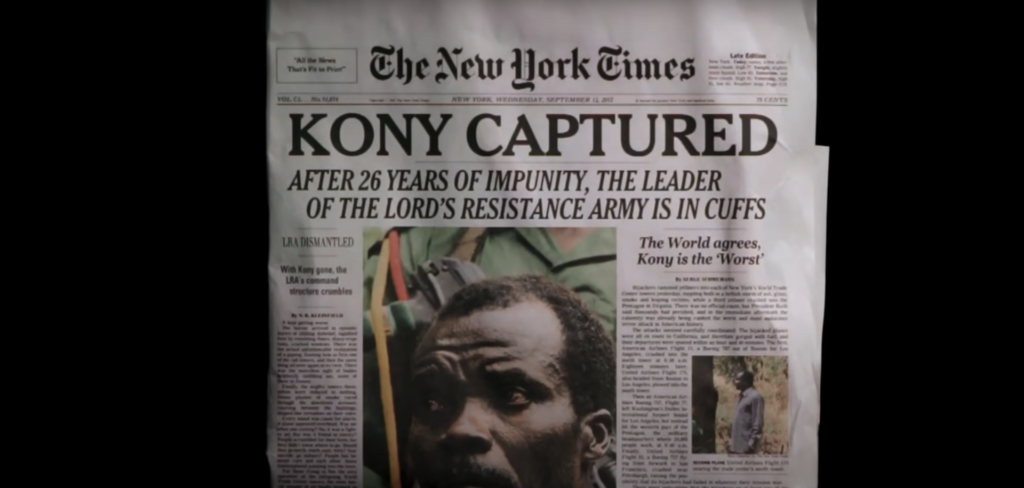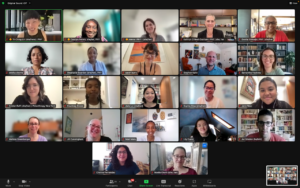4 min read
Simple Stories and Complex Narratives

This piece was originally published in 2012 on Philanthropy News Digest.
Invisible Children’s Kony 2012 video, the most viral ever, is an almost perfect mashup of up-to-the-minute advocacy messaging and tactics: the personal story frame; the clear antagonist and invitation to the viewer to imagine him or herself as the hero; the explicit call to action executed across multiple platforms; the use of simple narrative; even the appeal to young people’s concern that mass media ignores their voices.
That said, I find many things about the video to be unsettling. Never mind its strong support for a militaristic solution, or its use of a questionable dominant narrative (an issue that was addressed in the organization’s follow-up video); I want to address the global conversation the video has sparked around the telling of complex versus simple stories. Is there a place for simple stories in advocacy? If your organization is seeking to solve a complex problem, must it always share complex stories?
Invisible Children has a clearly defined goal: “to arrest [the warlord Joseph Kony], disarm the LRA and bring the child soldiers home” — and Kony 2012 invites viewers to engage with that story solely on the basis of the organization’s proffered solution. Detractors of the video rightly note that the story of conflict in Uganda is far more complex than the video presents — precisely because they themselves view the conflict through the lens of complex systemic change.
I don’t happen to think simple stories are needed to share complex narratives. (I use “narrative” to refer to the larger story and frame, and “story” as the small episodes and moments that encapsulate the larger narrative.) People are emotionally complex, live complex lives, and can relate to authentic, emotionally complex stories. The longevity of The New Yorker, the popularity of This American Life, the respect and attention paid the deeply reported journalism of ProPublica attest to our willingness to thoroughly engage with complex long-form narratives.
Too often, however, advocacy organizations lose sight of the solution they were created to advance and instead focus on larger systemic issues that their work addresses only in part. Their communications drift toward addressing an entire society rife with systemic problems, rather than actively shaping and providing a specific response to an essential aspect of a systemic problem.
In other words, not every call to action must address a complex and systemic social problem. It’s important to remember that the people we seek to engage not only have a role to play in the provision of partial solutions to bigger problems, they welcome that opportunity.
Not that crafting simple stories is easy. In a recent post (“Juggling Advocacy, Audience and Agency When Using #Video4Change“), Sam Gregory of WITNESS offers some caution and guidance with respect to how and when simple stories distort complex narratives:
- Simple is too simple if the initial action participants are asked to take is not followed by a next step in a ladder of engagement. (I would add that Invisible Children explicitly notes that the video is a “first entry point” to engagement.)
- Simple is too simple when it models a solution that misdirects an audience’s understanding of the systemic causes of an issue.
- Simple is too simple when an entry point does not allow viewers/participants to easily drill down and engage with the underlying complexity of the issue.
Ethan Zuckerman, co-founder of Global Voices, an international community of bloggers, explains the “ladder of engagement” concept in a post titled “The Passion of Mike Daisey: Journalism, Storytelling and the Ethics of Attention“:
Even if an initial message is simplified, some percentage of the people who watch the video will become engaged and learn more about the situation, expanding from a black and white picture to a more complex and nuanced one. Given the challenges of getting people to care about a situation like child soldiers in Central Africa, or dangerous labor practices in China, perhaps the best we can do is offer a simplified explanation and hope others will delve deeper….
And Zuckerman points to another indicator of when “a simplified narrative becomes too simple” — when “villains are transformed into heroes.”
I’ve quoted Jean-Luc Godard before, and I’ll do so again: “Sometimes reality is too complex. Stories give it form.”
So the question becomes, How can you place complex issues into understandable and actionable contexts? What are the discrete solutions needed to solve a complex problem, and how can your organization share a story or stories about each of those solutions? What does your organization need to do to share stories with its audiences that increases their emotional engagement, understanding, and, ultimately, ability to solve a complex problem?
Thaler Pekar & Partners is internationally-recognized for its deep expertise in narrative, story, and communication. Both the BBC and the Smithsonian Institution have hailed the founder, Thaler Pekar, as one of the world’s leading experts on institutional storytelling.
For 14 years, the team at Thaler Pekar & Partners has advised visionaries on being understood and influential. Our trademarked communication processes — Heart, Head, & Hand®, Engagement Equation® and Invitational Incline® — provide leaders with the confidence to speak, listen, and be heard, and sustain them in offering effective motivation. As a result, teams are more productive, audiences are more receptive, and visibility increases.
Our award-winning work ranges from gathering 178 oral histories across four continents and six countries for Chuck Feeney’s The Atlantic Philanthropies; to finding and refining stories about integrity for Novartis senior leadership; to coaching a mainstage TED Talker; and to developing a communication and story skills academy for L’Oreál International Educators and Customer Representatives.







